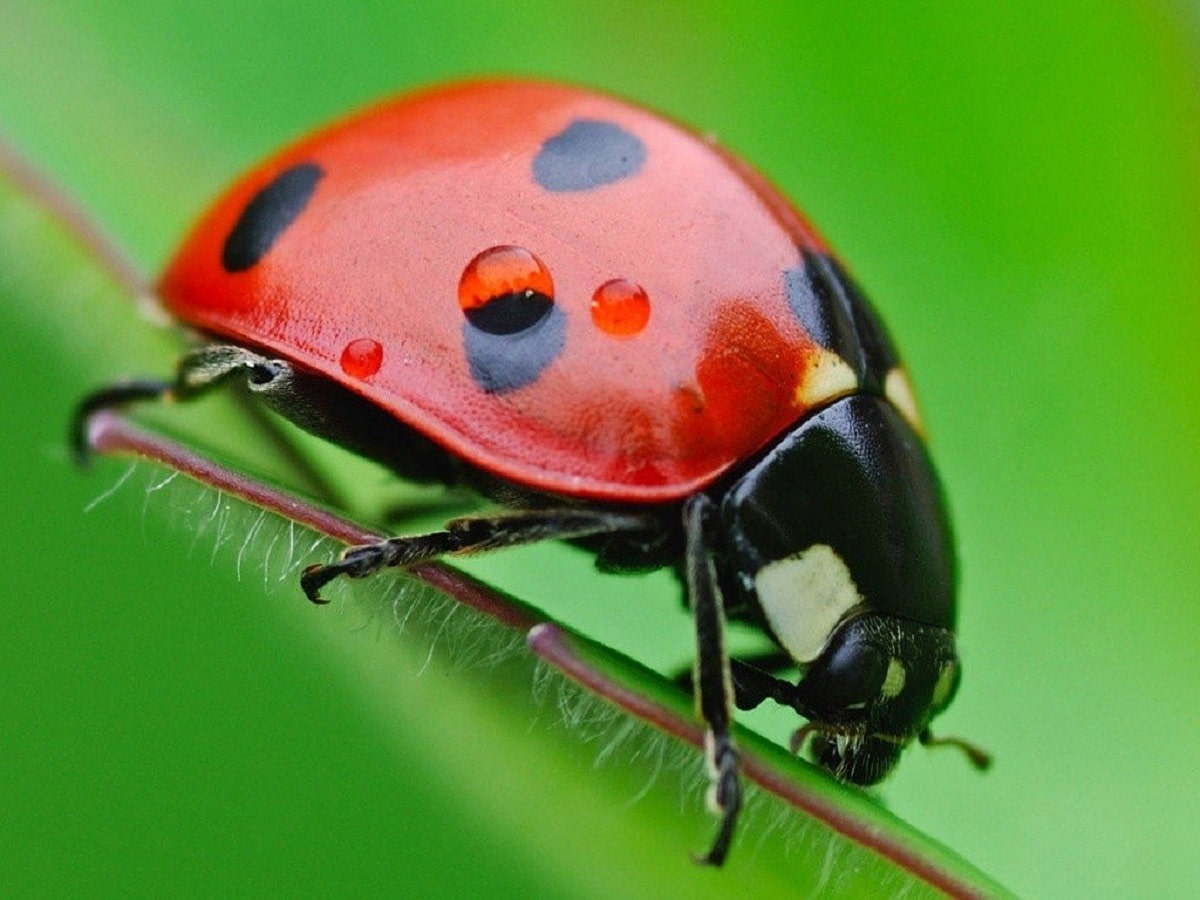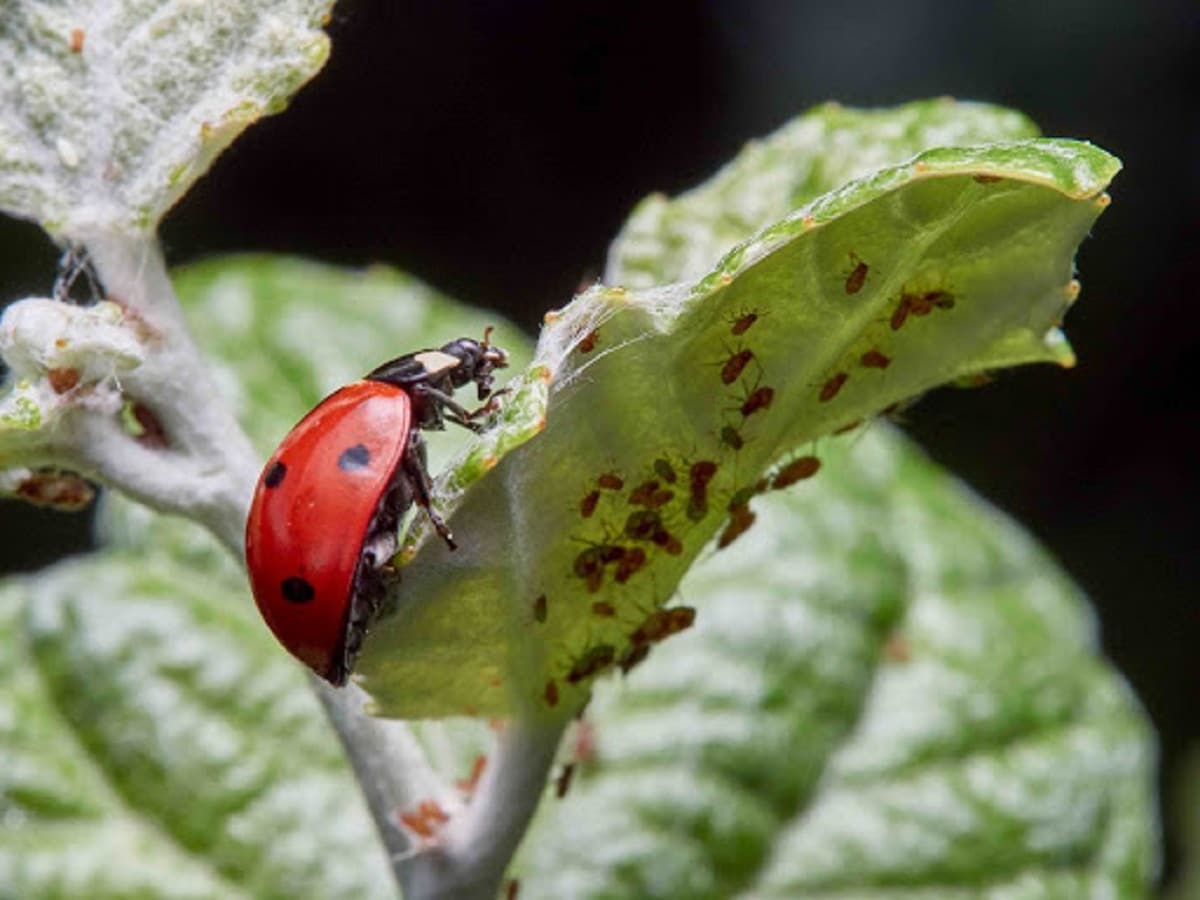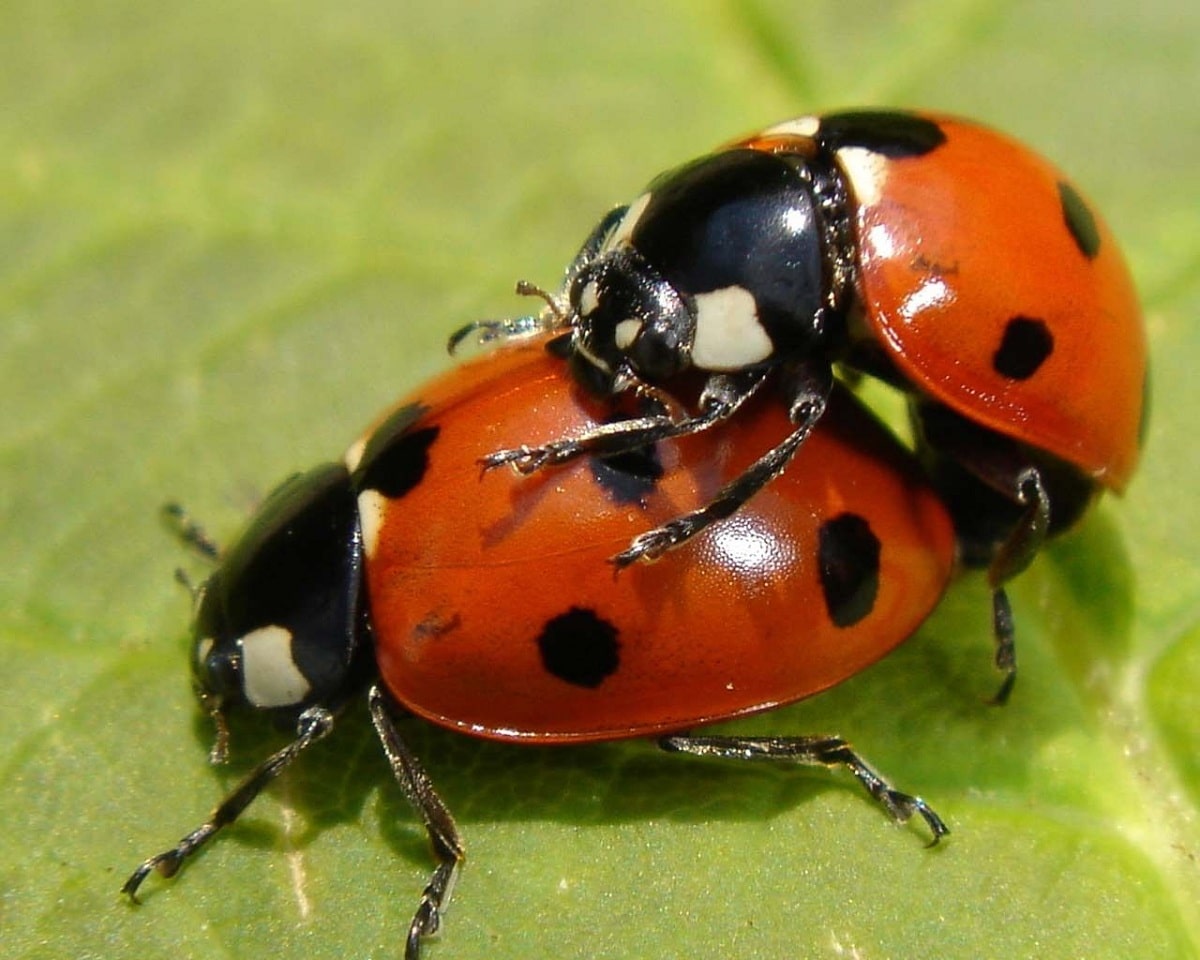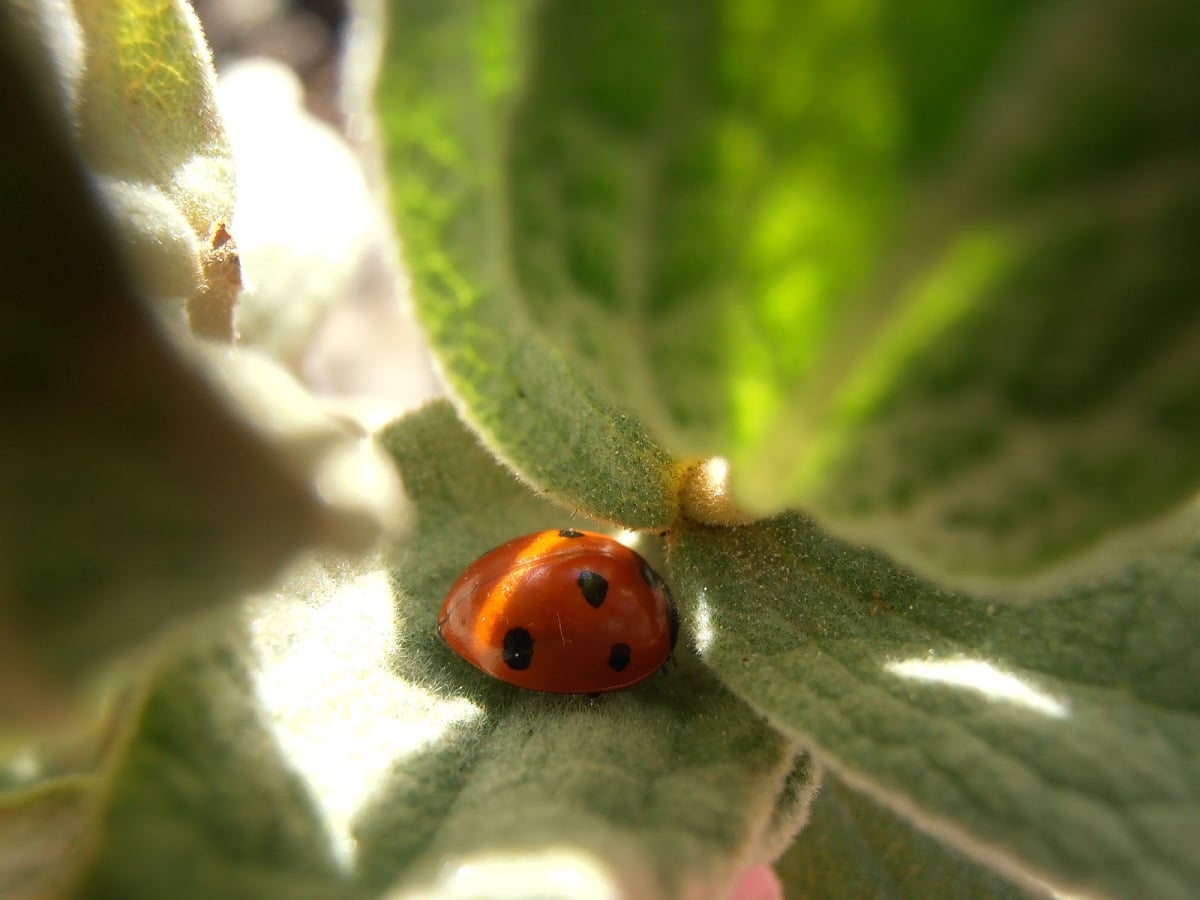
Surely you have ever met seven-point medicine. It is a species that belongs to the coccinellidae family and is native to Europe, Asia and North Africa. Its scientific name is Coccinella septempunctata and it has great potential in the use of the control of other pests that can attack crops and plants in gardens. It has become quite famous around the world, not only because it is widely recognized as a common species, but because of its effectiveness in controlling acid. Aphis gossypii.
In this article we are going to tell you all the characteristics, biological cycle and uses of the Coccinella septempunctata.
Key features
Since this species was established in North America, specimens have been found hundreds of thousands of kilometers from its original establishment. In many countries this species compete with others and are capable of displacing native species and other members of the coccinellidae family. This means that some insect populations are declining their populations.
The seven-point ladybug has been used to control aphids in greenhouses and appears to be a natural enemy of the lungs. Thanks to its effectiveness in pest controls can prevent the presence of aphids in citrus crops, beans, potatoes, sweet corn, sunflower, alfalfa, wheat, sorghum and nuts. Another function that this insect can have in the natural ecosystem is as a pollinator of endemic plants. In this case, we emphasize that the Coccinella septempunctata It has served as a pollinator for an endangered endemic plant known as Disanthus cercidifolius.
Keep in mind that the success in the development and distribution of this ladybug is because it is highly competitive. This makes be able to act as predators and displace other native coccinellids from the ecosystem. Numerous cases of bites have also been reported during ladybug invasions in Britain. Some cases have also been reported in which there have been damages in crops and but in the processing of grapes due to the Coccinella septempunctata.
Another reason it is very successful in spreading and increasing its populations is that, when it reaches adulthood, it has very few natural enemies. And it is that it has a particular defense system that consists of an exudation of toxic compounds from the gland between the femur and the tibia. These toxic compounds are very harmful to all common predators such as birds and some small mammals. The weakness of these insects is that they are very prone to infections caused by entomatogenic fungi, attacks by wasps and protozoan organisms.
Description of the Coccinella septempunctata

When individuals reach their adult stage, they are relatively large. They have a pale spot on both sides of the scutellum and two characteristic pale spots along the anterior side of the pronotum. The body of the suckling pig is oval in shape and over time it develops and acquires a red pigmentation that deepens as it ages. Although it is known as a seven-point ladybug, it can vary between zero and nine points. The black and red pigments alternate. If they are at an average temperature of 25 °, they usually have a life expectancy of about 94 days.
These insects are in their egg state fixed vertically on the leaves and stems of plants. Once the female lays the eggs, they take approximately 4 days to incubate. If temperatures are higher, this incubation time can be shortened. Only the larvae once hatched do the eggs take a day to eat the shells, neighboring larvae and infertile eggs. This is where they change size and they can grow in a period of 10-30 days to a size of 4-7 mm.
The coloration of these insects can vary according to the environmental temperature. When the temperature is very high, the grape exhibits a more orange color and, at low temperatures, the color ranges from dark brown to black.
Habitat and area of distribution of the Coccinella septempunctata
The seven-point ladybug can be found in most habitats where aphids are present. We have already mentioned that they are insects that prey on aphids and thanks to this they are capable of spreading in their distribution area. The ecosystems where the Coccinella septempunctata they usually have herbaceous plants, shrubs and trees where aphids can live. They are usually in open fields, grasslands, agricultural fields, swamps, suburban gardens, and some parks. Therefore, it is one of the most commonly known insects.
To attract individuals and mate they implement chemical signals not only for the allegation of individuals but to guarantee that the group will come out of winter with the ability to guarantee their reproduction.
Reproduction

As we have mentioned before, the seven-point ladybug escapes easily spreading through ecosystems since it has a good reproduction. Each ladybug has the ability to lay more than a thousand eggs during its lifespan. Egg laying is concentrated in the spring and early summer season where females are capable of laying up to 23 eggs a day.
These insects reach their sexual maturity around eleven days in females and nine days in males. Eggs tend to be laid in small groups as long as they are in areas protected from direct sunlight. The eggs are laid on the leaves and stems near the aphids. The Coccinella septempunctata it is able to reduce its ability to lay eggs if it senses it has a shortage of prey. It resumes the common rhythm of laying eggs when the food rises again.
I hope that with this information you can learn more about the characteristics, life cycle and habitat of the Coccinella septempunctata.
